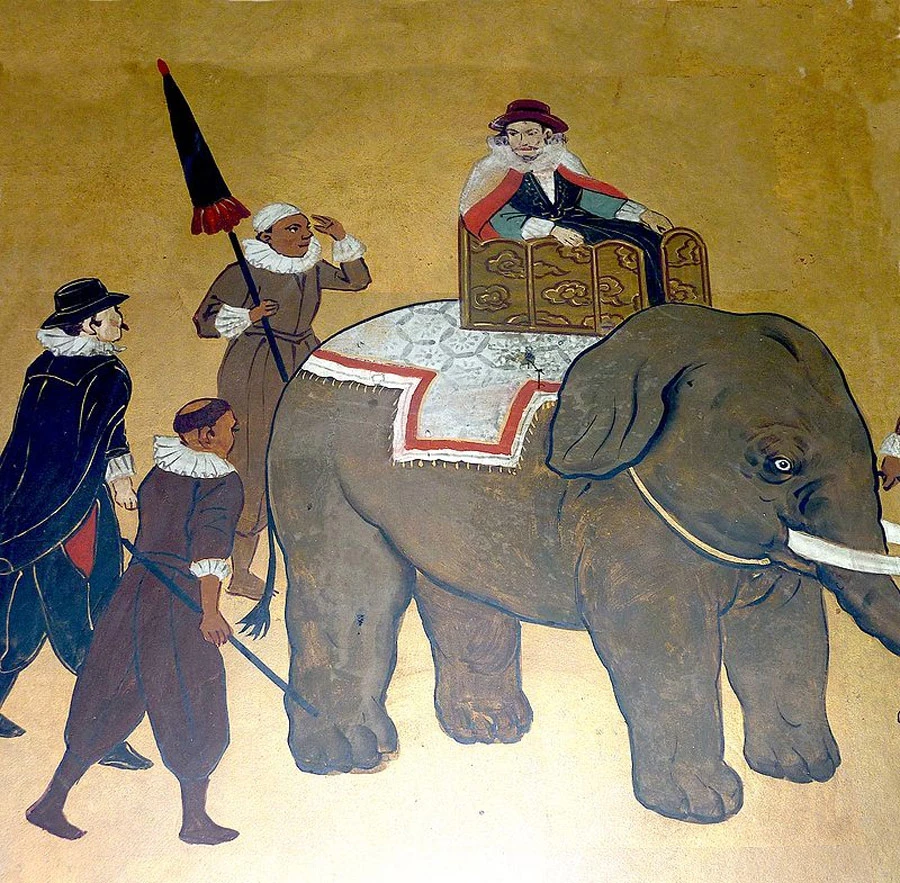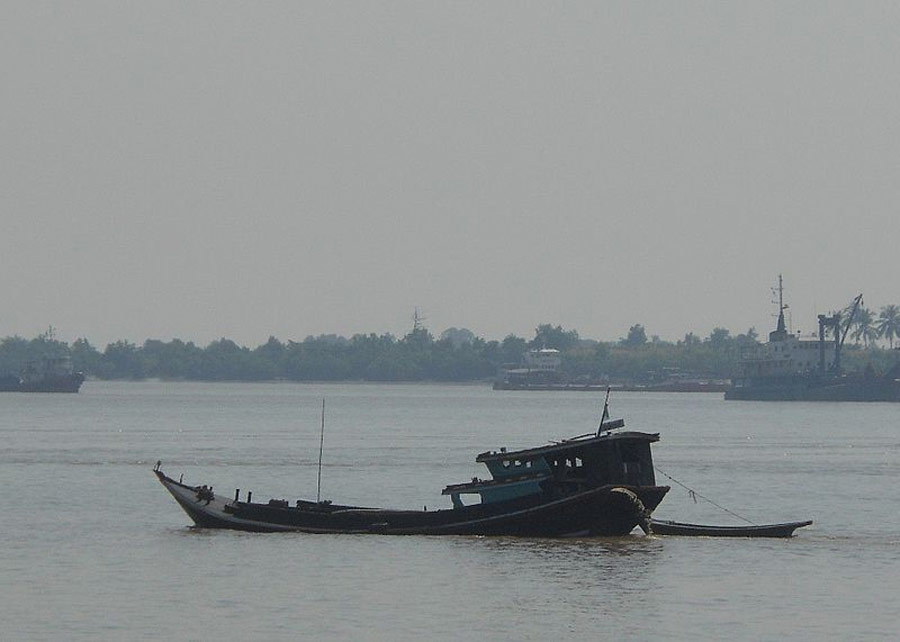Late 15th century Myanmar was an enlightened place. Under the reign of King Dhammazedi from 1471 to 1492, a former Buddhist monk, the kingdom reached that pinnacle of its Golden Age and many wonders were created. Among them was the Great Bell of Dhammazedi.
The largest bell ever made, it was said to measure 12 cubits high and 8 cubits wide (roughly 6 m by 4m or 20 foot by 13 foot) and was cast from 180,000 visses (294 tons or 267 tonnes) of metal, including silver, gold, copper and tin. It was engraved with a script described by a visiting foreigner as indecipherable language covering the entire surface. However, as marvels go it was not perfect.
Firstly, the king’s astrologer advised him to postpone the casting of the bell because it was at the inauspicious time in the astrological calendar, and he foretold the bell would not produce any sound. The casting was completed any way and the bell was tested, producing what was reportedly an unpleasant tone.
The bell was presented to the Shwedagon Pagoda, a great gilded “stupa” or temple which survives to this day. Only this structure, possibly the oldest stupa in the world, was considered suitable for the great bell.
Such a bell must have been extremely important to Dhammazedi for its raw materials and craftsmanship, and the skill required to cast such a vast object. However, the fate of the bell seems almost unbelievable, and has sparked a hunt for it which survives to this day.
You see, the bell, all 294 tons (267 tonnes) of it, was stolen.
How Do You Steal a Bell the Size of a House?
The 16th century saw a decline for Dhammazedi’s kingdom compared to the glorious years before. At the same time as this, European explorers and merchants had begun to make contacts in Lower Myanmar. These were soon followed by settlers, and then conquerors.

One such was Filipe de Brito e Nicole, a Portuguese warlord and mercenary known as Nga Zinka to the Burmese. This adventurer, working for the Arakanese (a rival culture in Myanmar), arrived in Lower Myanmar sometime in the 1590s.
In 1599, de Brito led an Arakanese force that sacked the cities of Syriam and Pegu (now known as Bago), the capital of Lower Myanmar. The King of Arakan appointed de Brito as governor of Syriam. By 1600, de Brito, as the governor had extended his power across the Bago River to Dagon and the surrounding countryside.
De Brito, flush with success, did not intend to remain a mercenary. Exercising his power as the governor, he declared independence from the Arakanese king in 1603 and established Portuguese rule under Aires de Saldanha, the Viceroy of Portuguese India.
In 1608, the governor and his men plundered the Shwedagon Pagoda for its treasures. The Dhammazedi Bell was removed to be melted down to make cannon, and rolled down a hill to a waiting raft on the Pazundaung Creek. From here onwards, the Dhammazedi Bell was hauled by elephants to the Bago River.
However, the great bell was apparently far heavier than De Brito and his engineers had anticipated. While travelling along the river, somewhere near where the Bago and Yangon rivers meet, De Brito’s galleon broke up under the strain and sank. The bell disappeared under the waters, and has never been seen since.
Myanmar forces acting under King Anaukpetlun re-captured Syriam five years later, in September 1613. De Brito was fired from his duties as a governor, and summarily impaled on a wooden stake.
The Search for Dhammazedi’s Bell
The bell is a significant part of Myanmar’s history and religion, and some see the failure of De Brito to steal it as a sign that it resisted his destructive efforts. To this day, some civic and government leaders believe that if the bell can be found and recovered, this will usher in a new age of prosperity for Myanmar.
Many people have accordingly tried to find the bell so far, but without success. A professional deep-sea diver named James Blunt made as many as 115 exploratory dives, using sonar images of objects in the area for guidance.
The search is not an easy one. There are at least three other shipwrecks in the area, the water is muddy and the riverbed soft, and there is near-zero visibility underwater. The bell could be buried completely, sunk in up to 25 feet (7.6 m) of mud. Based on recovered fragments of De Brito’s ship, it is believed to rest somewhere between the wrecks of two Dutch East Indiaman ships: Komine and Koning David.
In 2000, the Burmese government had asked Mike Hatcher, an English marine scientist, and his team to raise the bell so that it could be restored to the Pagoda. He had agreed to manage the project involving Japanese, Australian and American companies.
After a flurry of excitement stirred up by the BBC’s announcement of the project, however, it never got off the ground. Hatcher was occupied with complications involved in his discovery in June 2000 of the Tek Sing in Indonesian waters, with the most extensive collection of antique shipwrecked porcelain ever found.
The Future of Dhammazedi’s Bell
So here we find a unique situation amongst lost treasures. We know where the bell is. We know what it looks like. But we have almost no certain way of raising such a massive and heavy structure from the bottom of the river.

The best approach is considered to be building a miniature version of an oil platform in the muddy rapids of the confluence of the two rivers with a large crane atop. After lifting the bell onto dry land, the intention is to construct a railway to transport it uphill about half a mile, back to the Shwedagon Pagoda.
In July 2010, the Myanmar Times, a prominent newspaper, had reported that an Australian documentary filmmaker and explorer Damien Lay was another foreigner who had decided to take up the project. Lay and his team had conducted extensive sonar surveys and diving operations, covering approximately 4 square kilometers (1.5 square miles) of river floor in the area where the bell was thought to be located.
As a result of this survey they found no fewer than fourteen separate shipwrecks, including two underwater targets considered significant to their mission. Furthermore, they claim to have acquired sonar imagery of both the bell and De Brito’s ship, although they are keeping the exact location secret.
Interestingly, the area they claim contains the bell is some distance from where it was previously believed to be. Have they found the Great Bell of Dhammazedi? Will it be recovered and usher in a new Golden Age for Myanmar?
We’ll have to wait and see.
Top Image: The Shwedagon Pagoda, where the bell was housed. Source: Bjørn Christian Tørrissen / CC BY-SA 4.0.
By Bipin Dimri